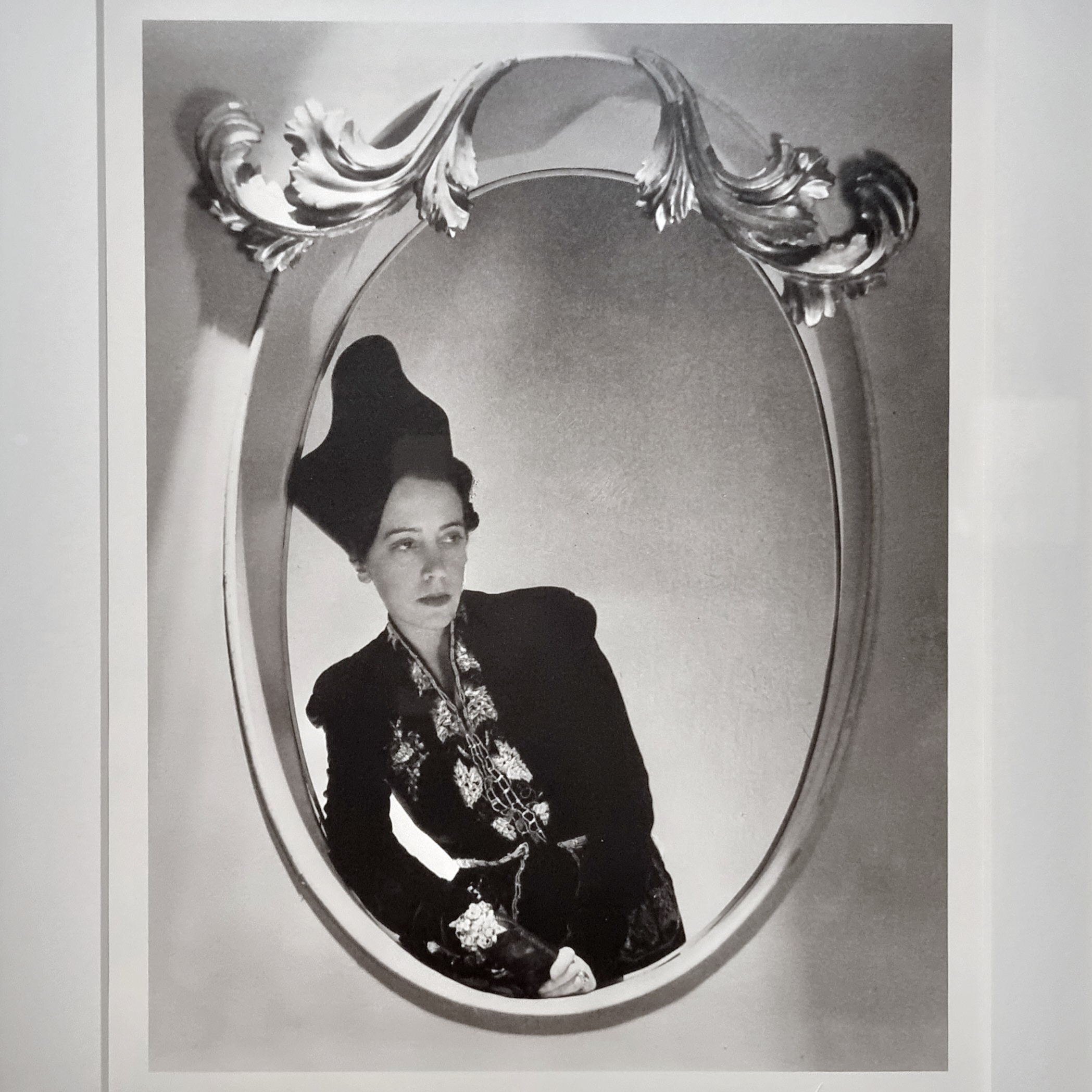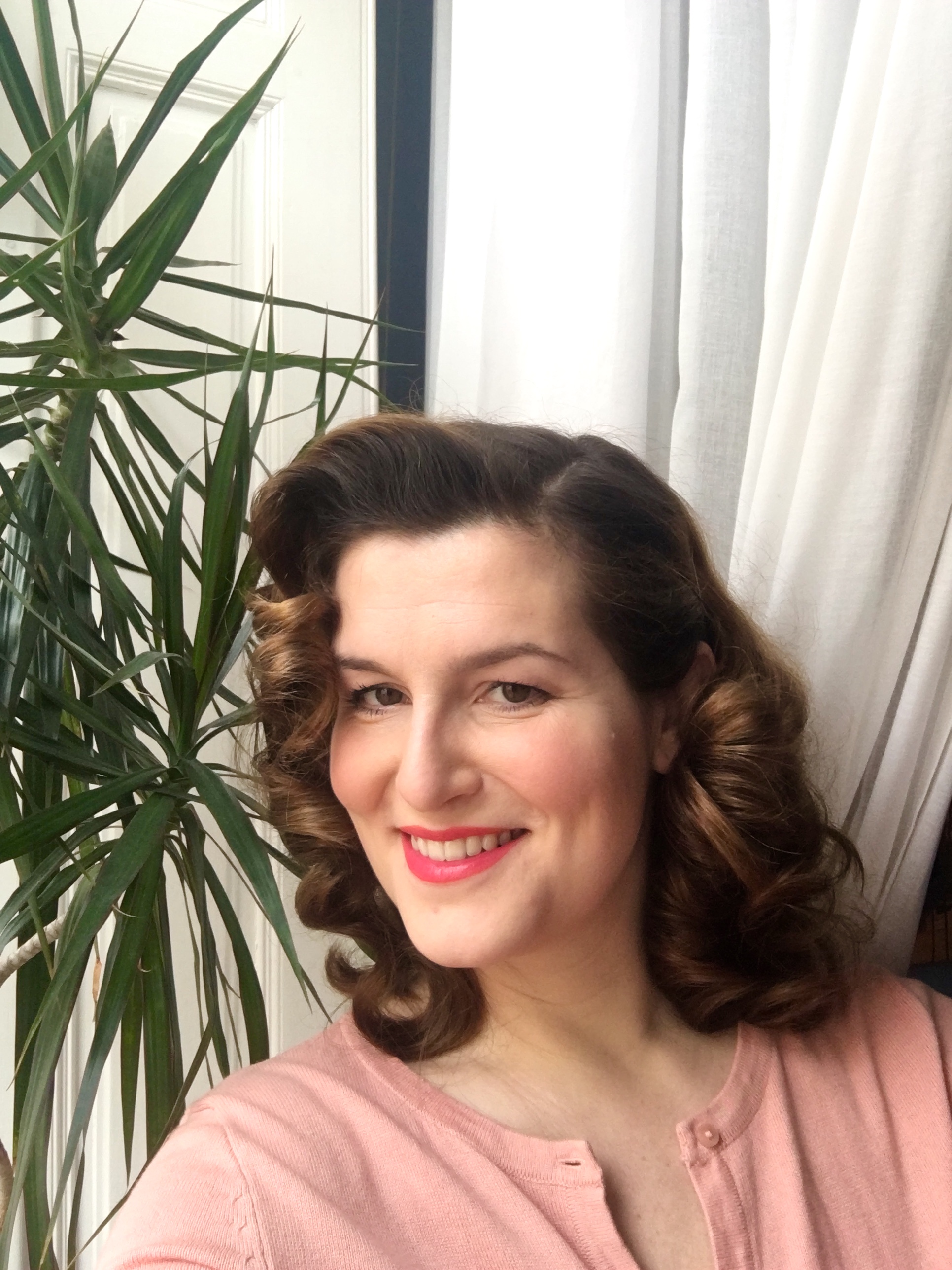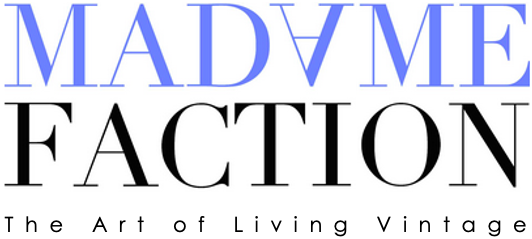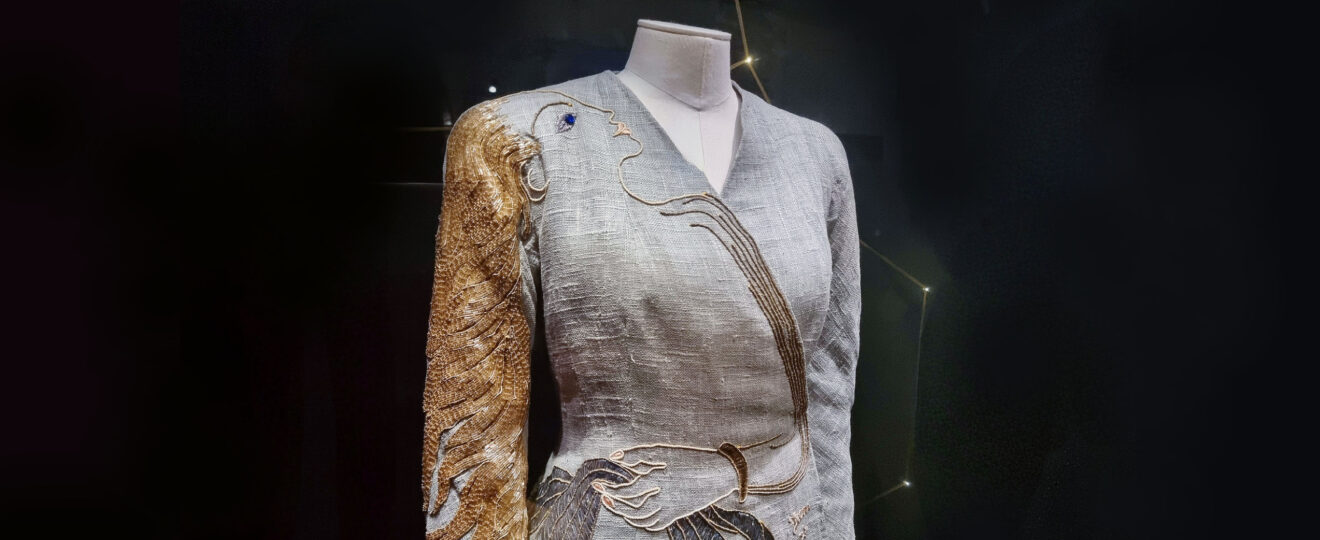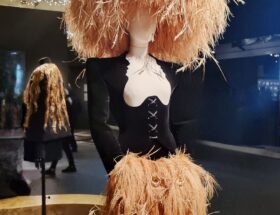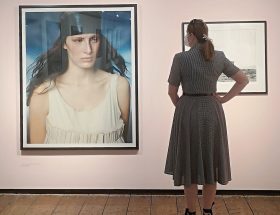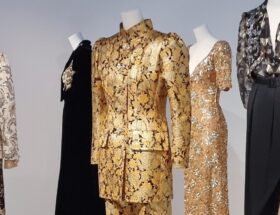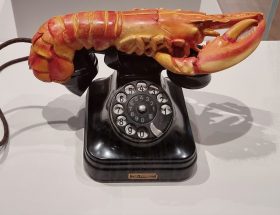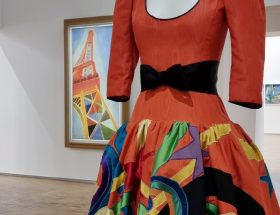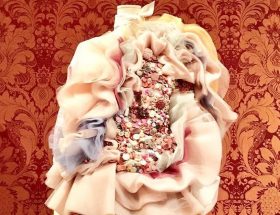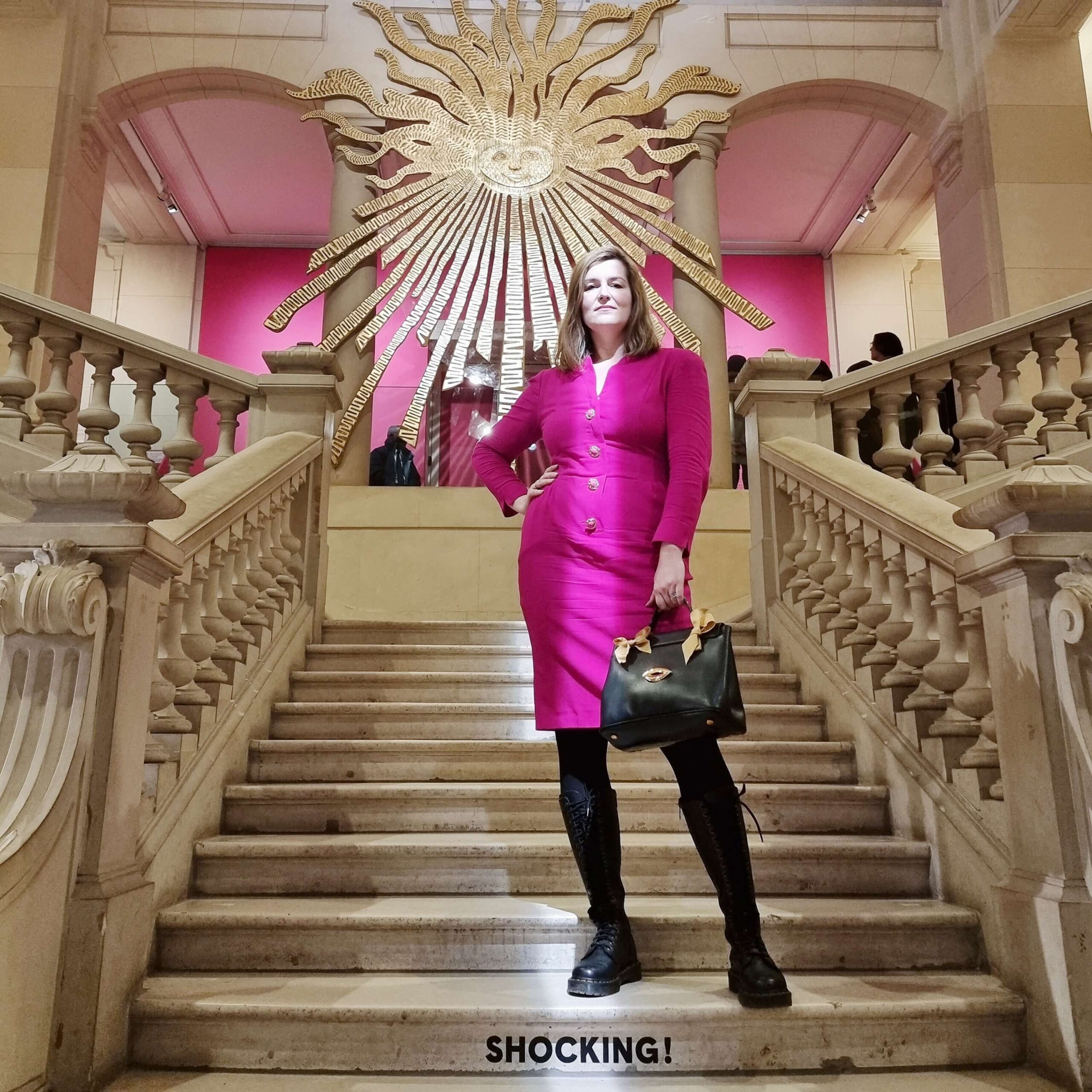
Famous COUTURIERE, surrealist ARTIST and Chanel’s fiercest ENEMY: Elsa Schiaparelli fulfilled her many roles – effortlessly as it seems. Today she might not be a huge name like Dior or Chanel, but her fashion proves to have that certain creative twist all while being very timeless. With the exhibition “Shocking! The surreal world of Schiaparelli” and over 520 objects, the Musée des Arts Décoratifs in Paris magnificently illustrates the creative genius of the Italian designer all while showing the huge influence, she had on fashion. Elsa Schiaparelli’s designs show many Surrealist approaches – here are the five main ingredients of her creativity.
SHOCKING color and ECSTATIC pleasure
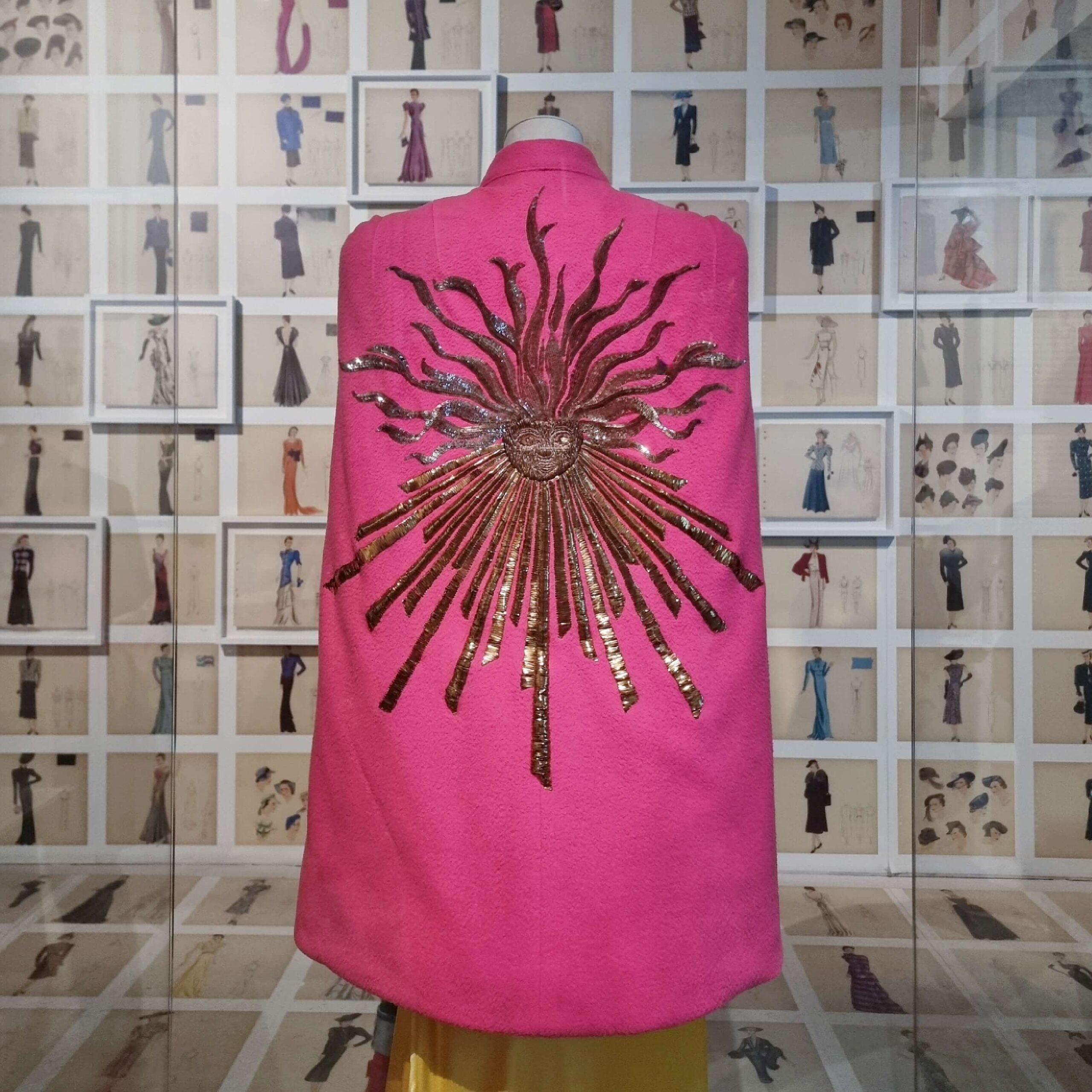
As an Italian woman by birth and French citizen by choice one might assume Elsa Schiaparelli had a rather FIERY TEMPERAMENT. And despite her autobiography confirming this assumption somehow, we’ll never really know. But looking at her fashion la Schiap certainly had an ardent temper: In her autobiography she stated, that color always gave her “ecstatic pleasure”1.
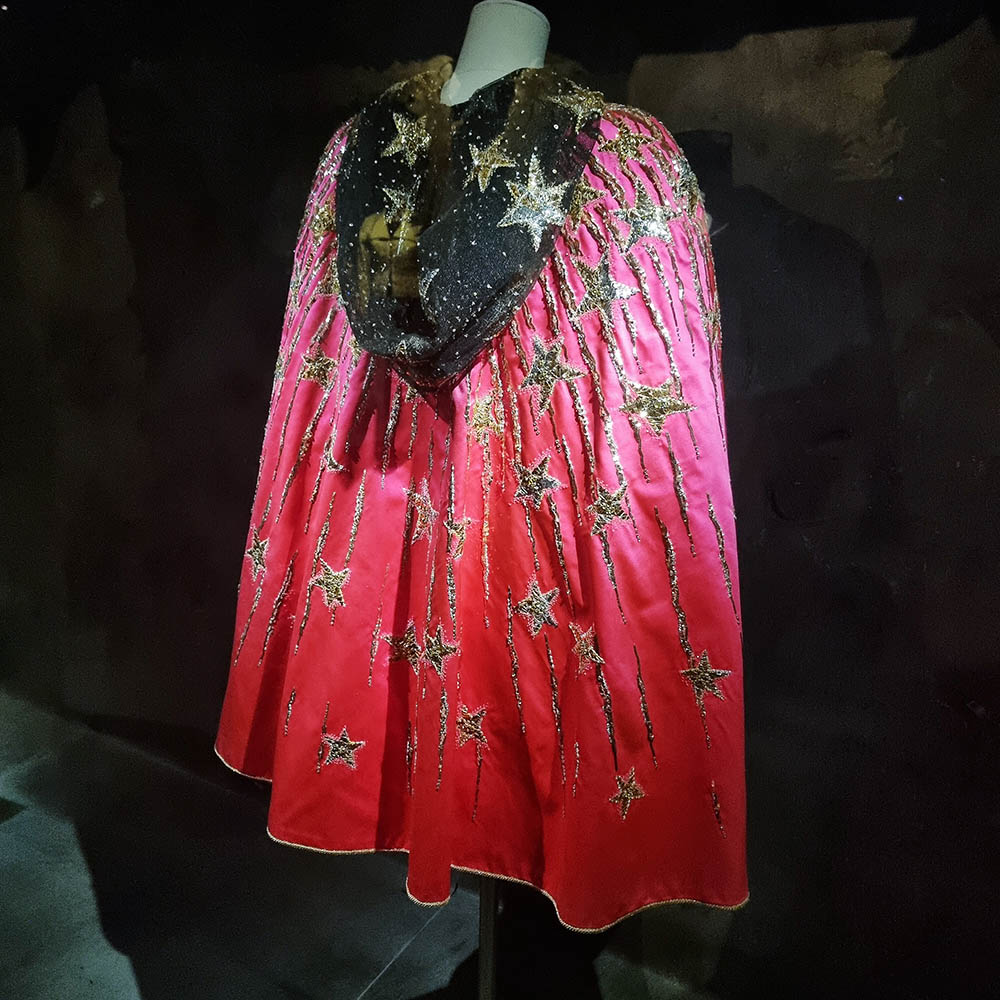
Subsequently the choice of her colors was certainly ARDENT. From the very beginning Schiaparelli opted for HARSH color contrasts as well as unusual colors, that guaranteed a dramatic entrance to every one of her clientes. During the beginning of her career, she often opted for black & white when designing garments as well as whole outfits and even her salon. From the middle of the 30s on she introduced her Shocking Pink, that had many derived color versions from then on. Her pinks appear every now and then: Sometimes as coats, as boleros, as dresses and even as monochrome outfits.
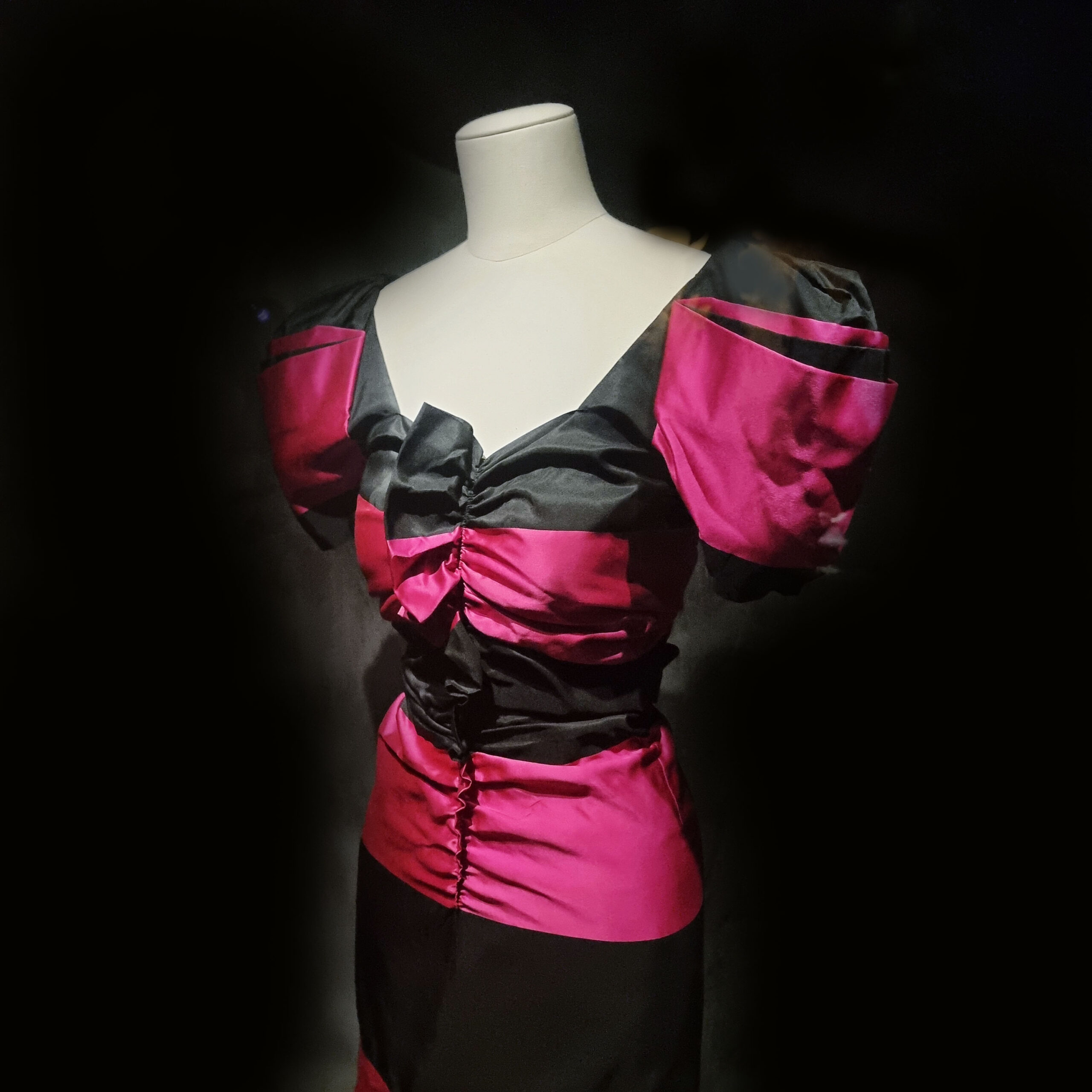
Profane LUXURY
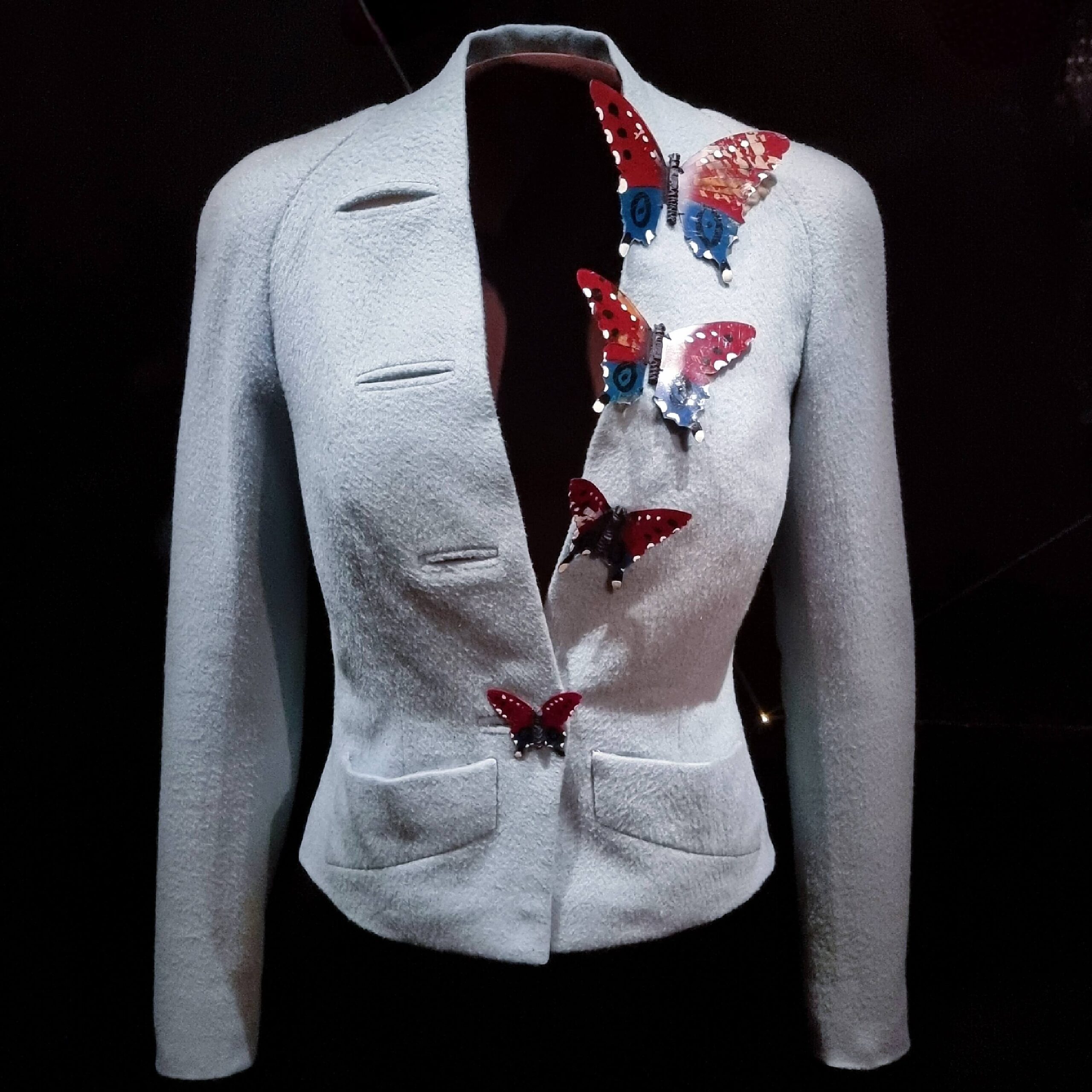
Just as with her colors Elsa Schiaparelli surprised with the choice of design details: She used insects as decorative elements on collars, as buttons or as jewelry. And we are not only talking about beautiful dragonflies or butterflies only – we are talking about the rather UNGLAMOROUS, nasty beetles and bugs.
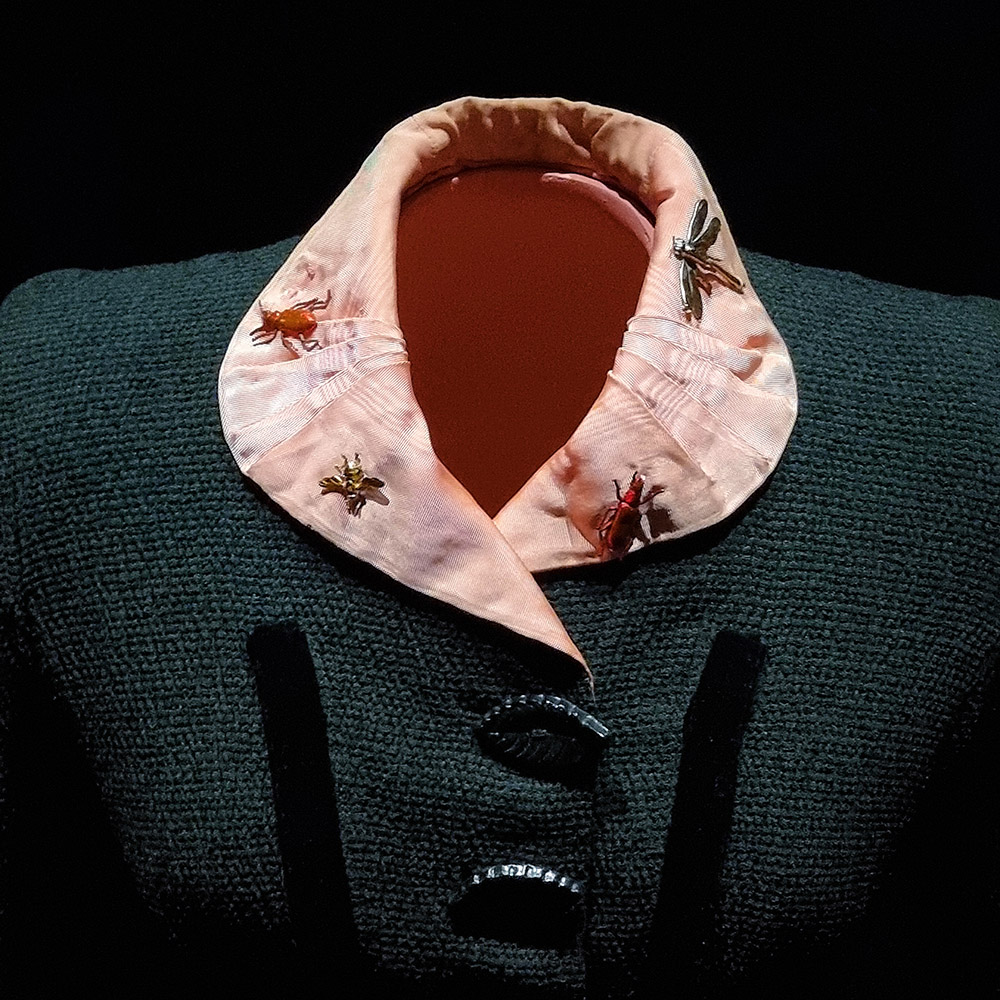
At another occasion she designs the famous “apron dress”, an evening gown that consists of a black long dress and a pink fabric in the cut of an apron put on it. But the choice of the shiny fabric combined with some beautiful flowers on top makes it an haute couture dress and not so much a FUNCTIONAL apron. The preference of profane inspirations like these proves how la Schiap had a very open mind when it came to her creations, daring to introduce the uncanny and the unglamorous to COUTURE.
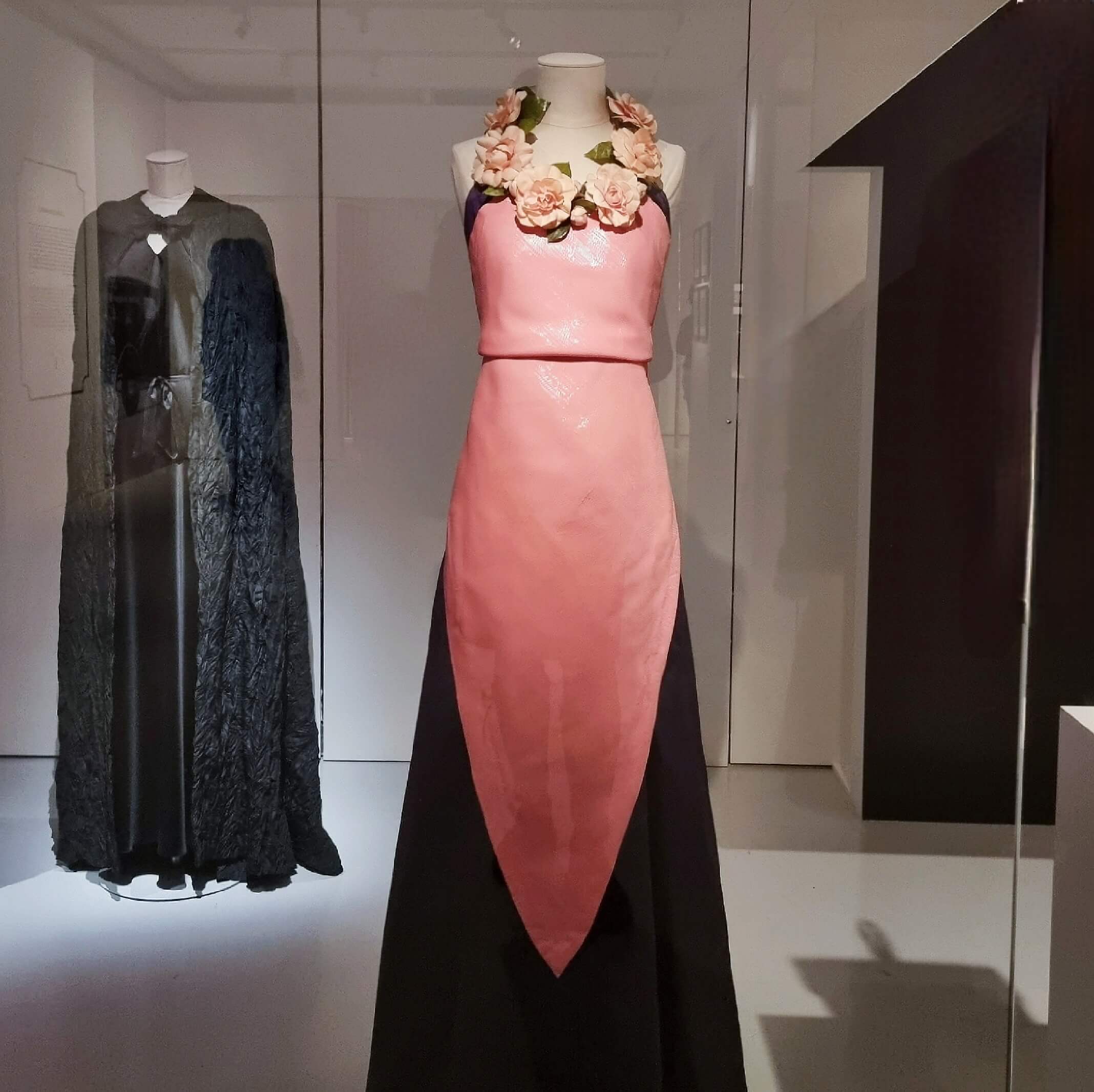
The UNCANNY body
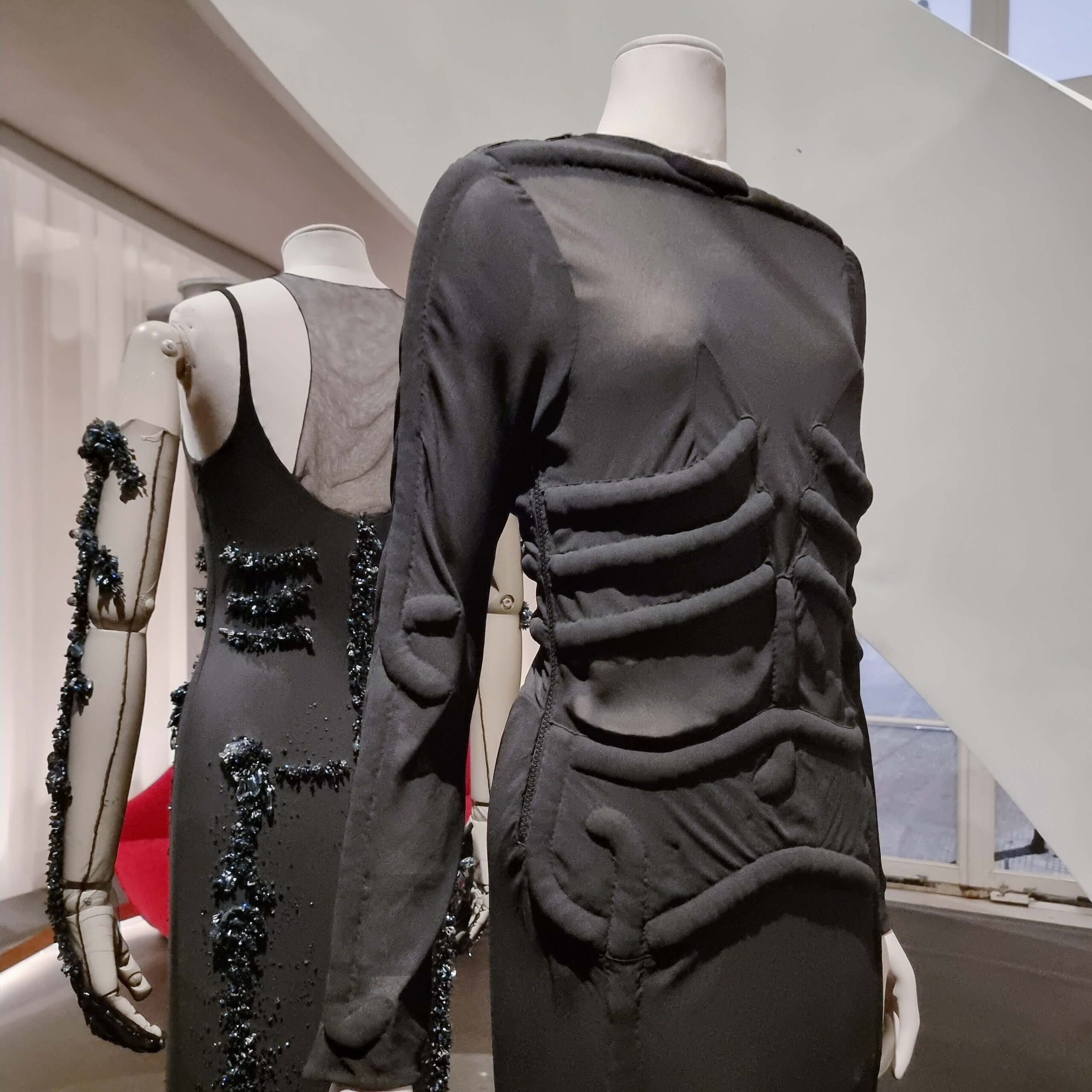
Talking about the uncanny, we of course have to take a look at the many times, Elsa Schiaparelli positioned parts of the human body at rather unusual places. She placed fingernails on the fingertips of gloves, created “snake-like volumes”2 on the skeleton dress imitating ribs and bones, embroidered hair strands on scarfs or created shoe hats.
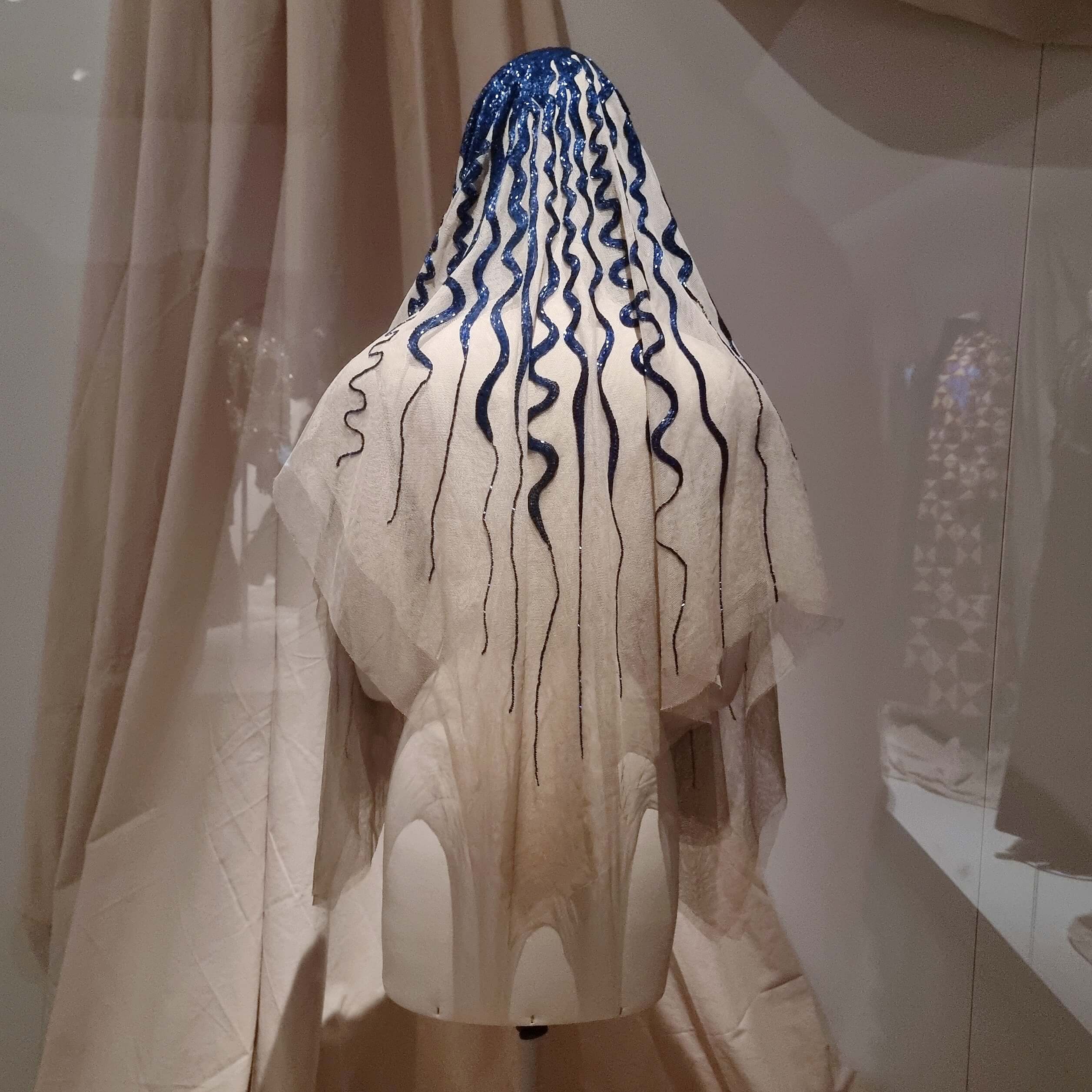
This approach illustrates the closeness to the many Surrealist artists surrounding her during the 20s and 30s in Paris. Whether it was Man Ray or Salvador Dalí, Elsa Schiaparelli shared similar visual ideas and perspectives during these fascinating years in the French capital and frequently worked together with the two artists.
SEX sells
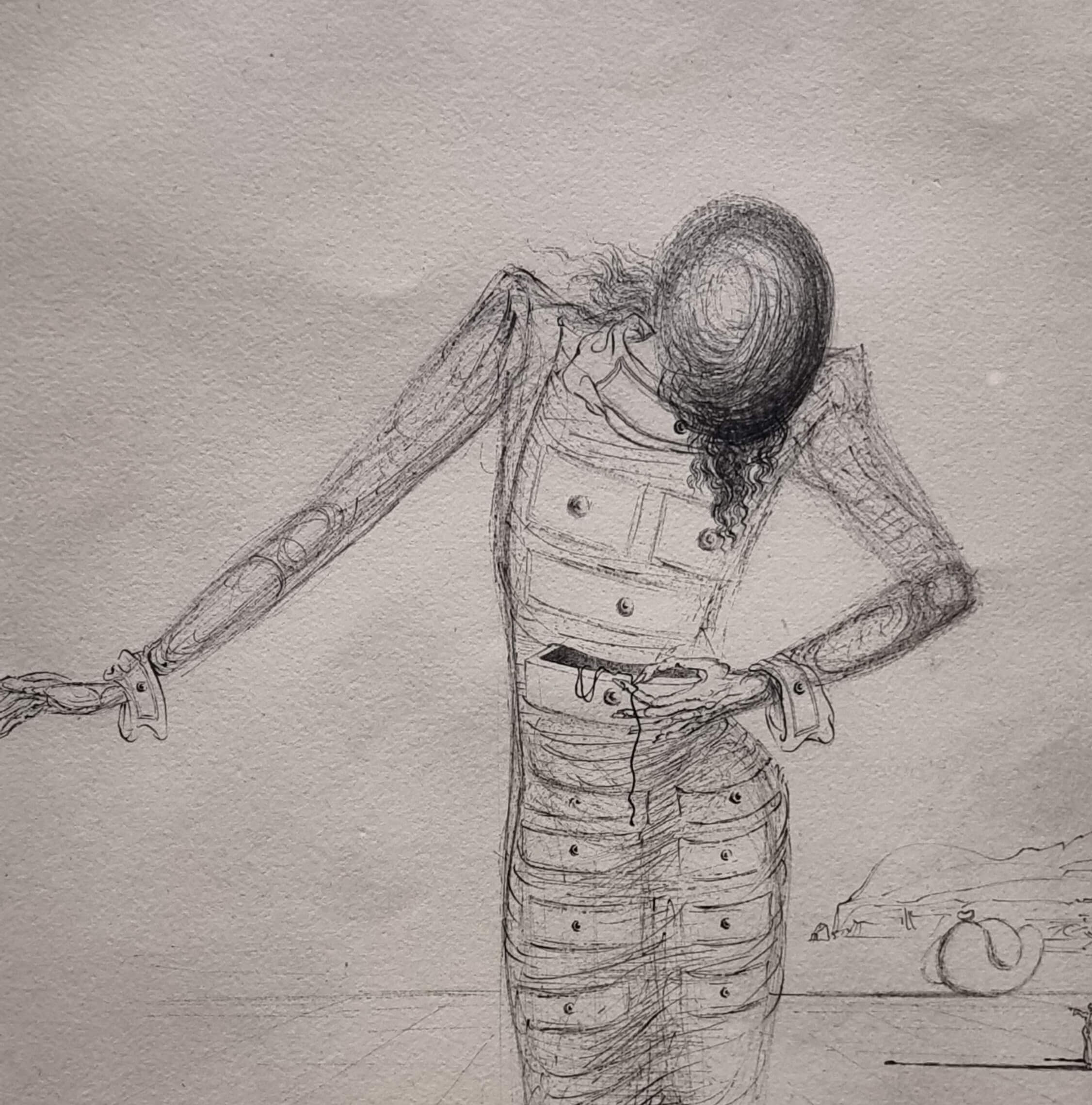
Surrealism was not only about placing familiar objects in not so familiar spots. This art style also focused a lot on sexuality and sexual fantasies. Schiaparelli – being the COURAGEOUS couturiere she always was – played along and used a very specific object for one of her most iconic designs: The lobster dress.
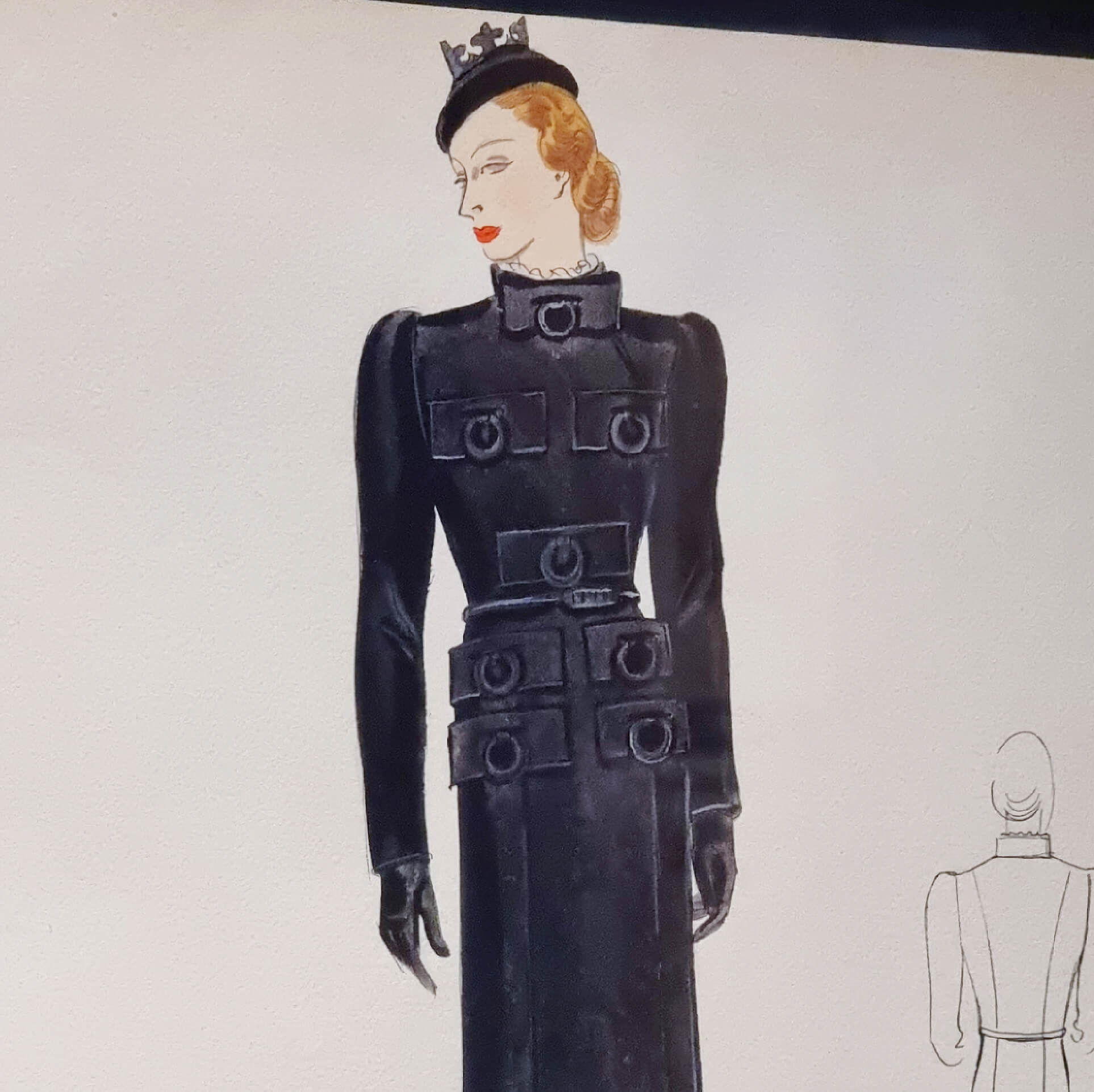
The lobster was already a favorite object of the Surrealists: Man Ray had created a very famous photo of a lobster lying on a woman’s torso in 1930, Gala Dalí had worn a lobster on her head in 1933, and Dalí had created his lobster telephone in 1934. Elsa Schiaparelli placed a huge print of the red crustacean on the front part of dresses’ skirt, with the tail placed on the assumed crotch. The humorously erotic dress (or is it rather erotically humorous?) was worn by no other than Wallis Simpson, the Duchess of Windsor and a pretty polarizing woman at that time, and caused a stir – not only for the Duchesses’ but also for Schiaparelli’s reputation as CHAMPIONS OF PROVOCATION.
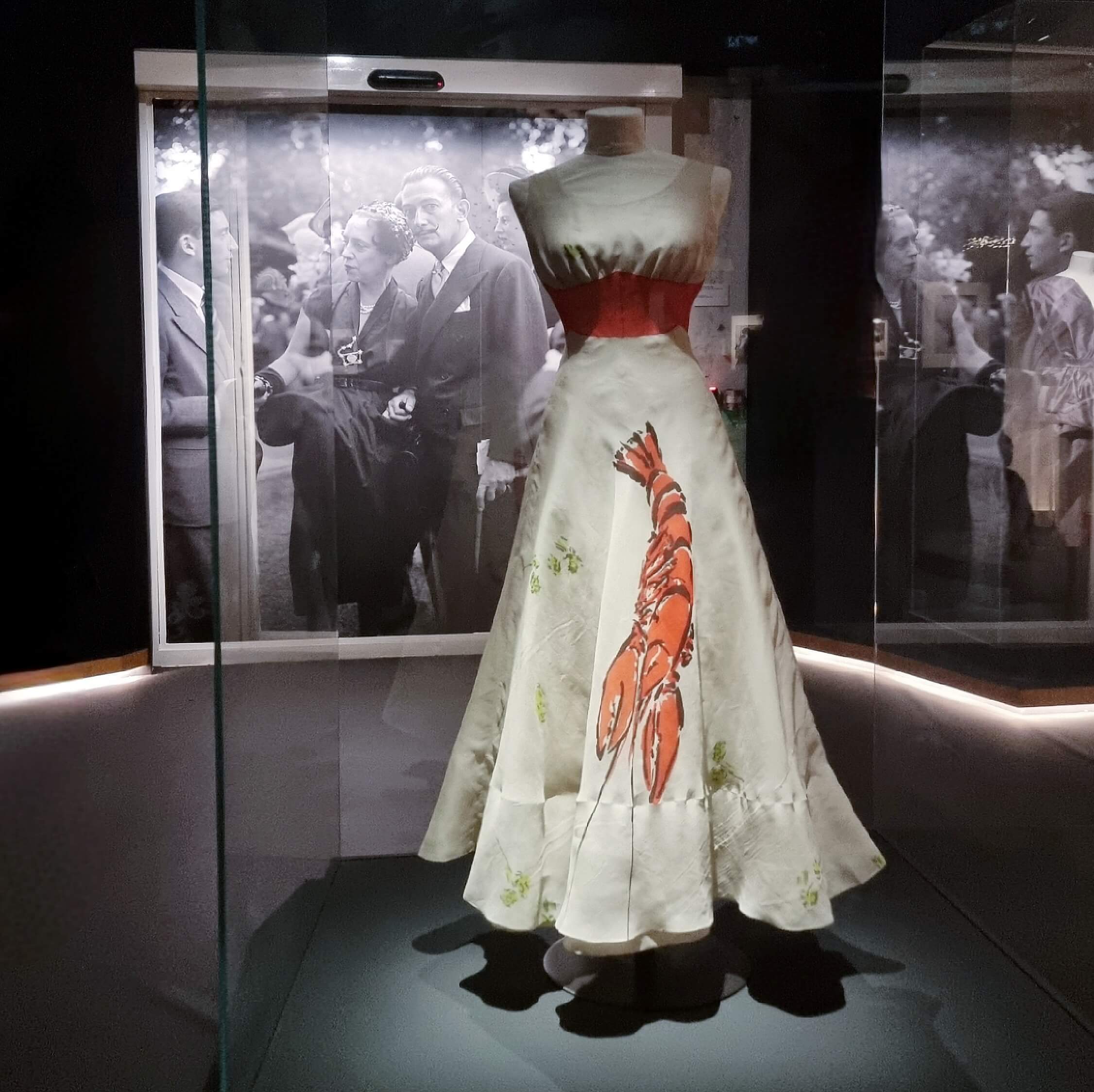
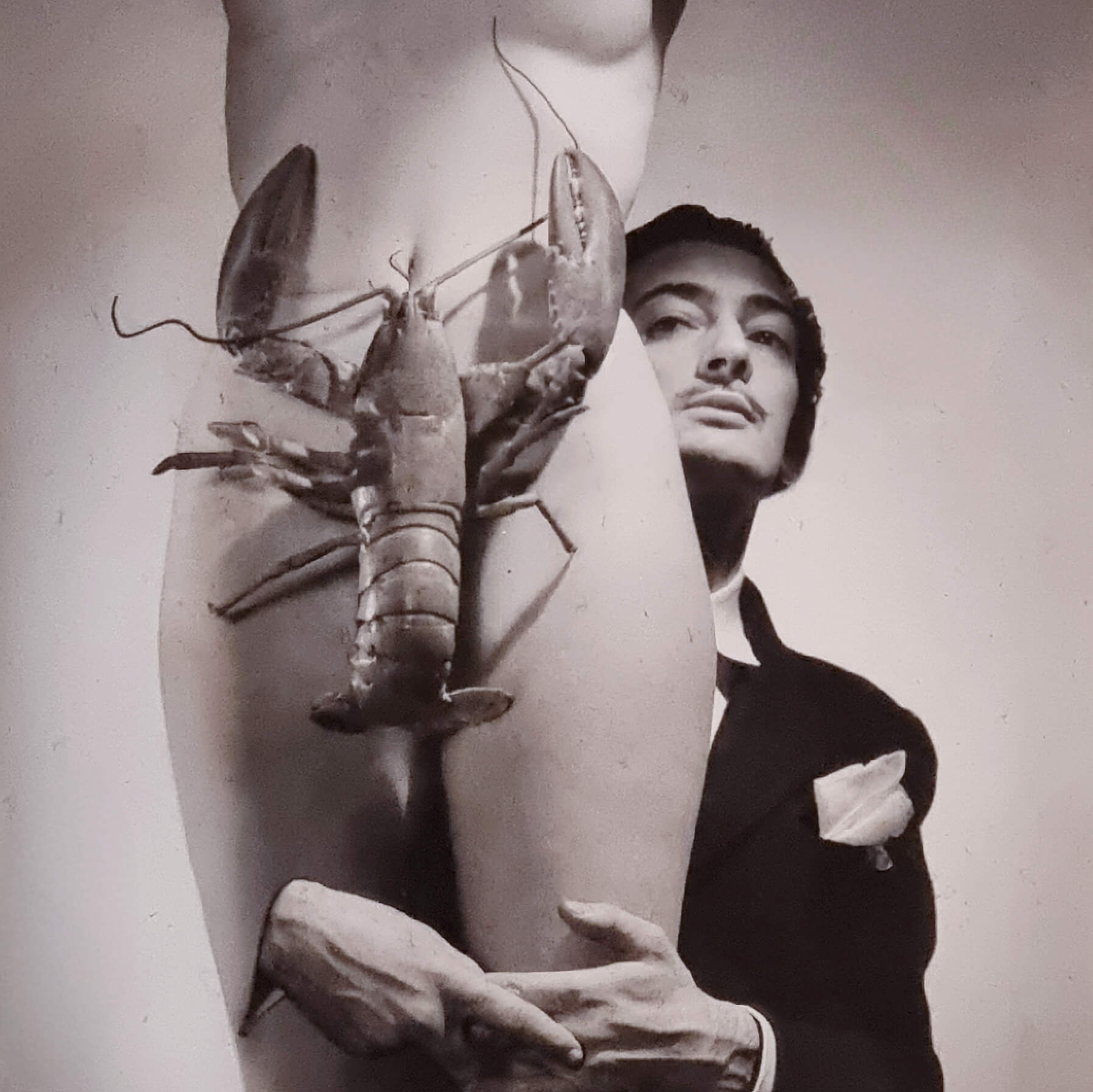
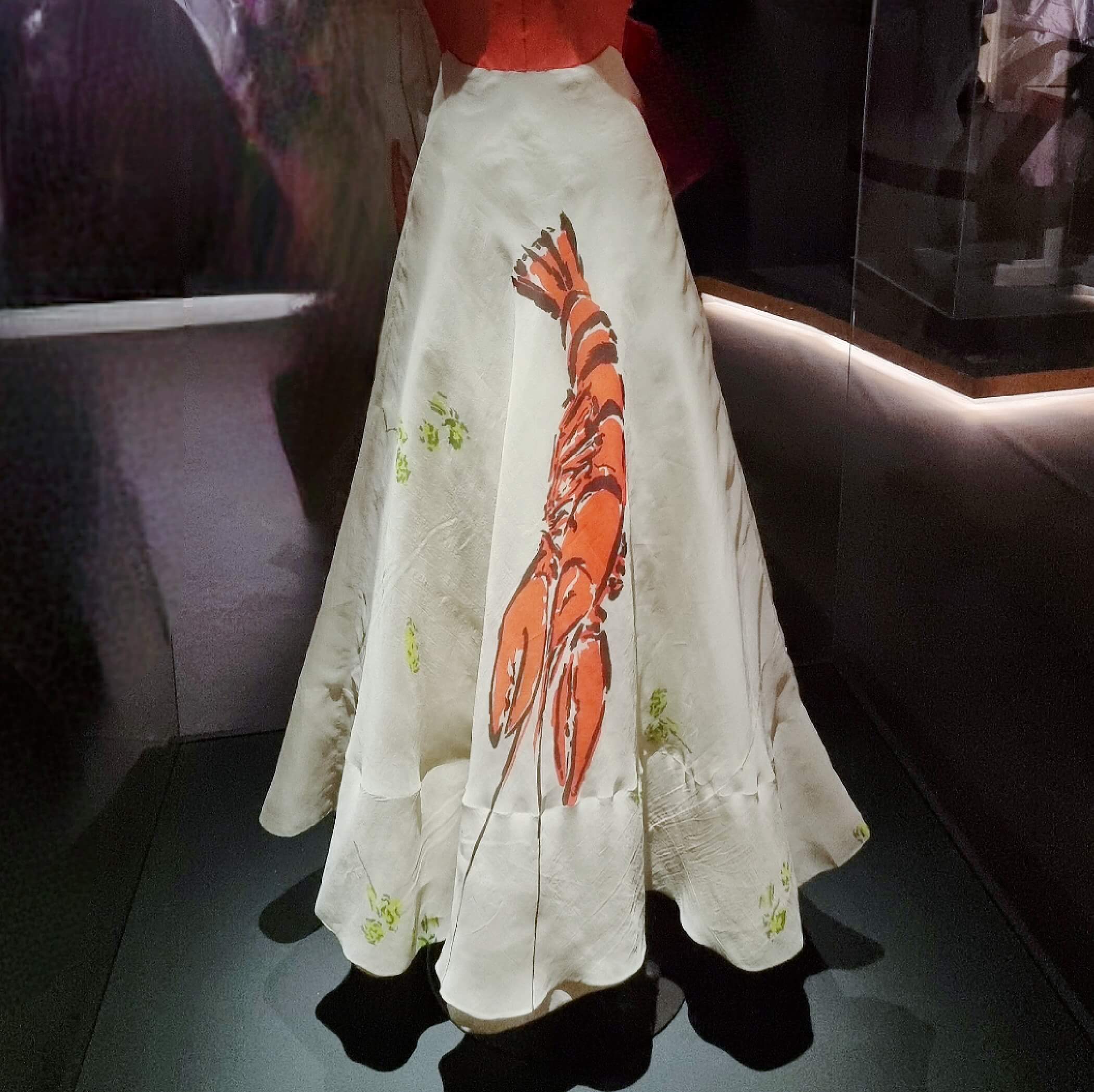
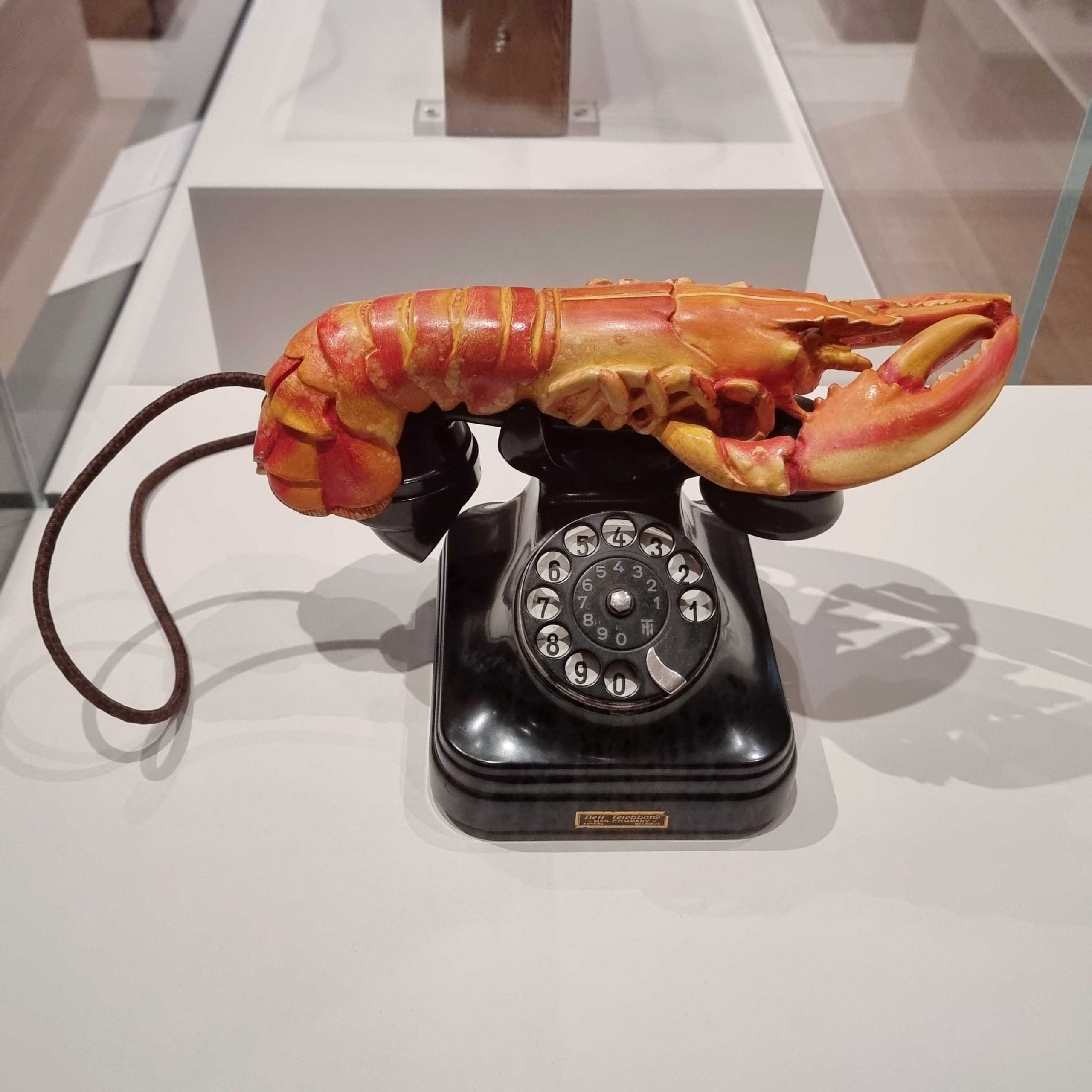
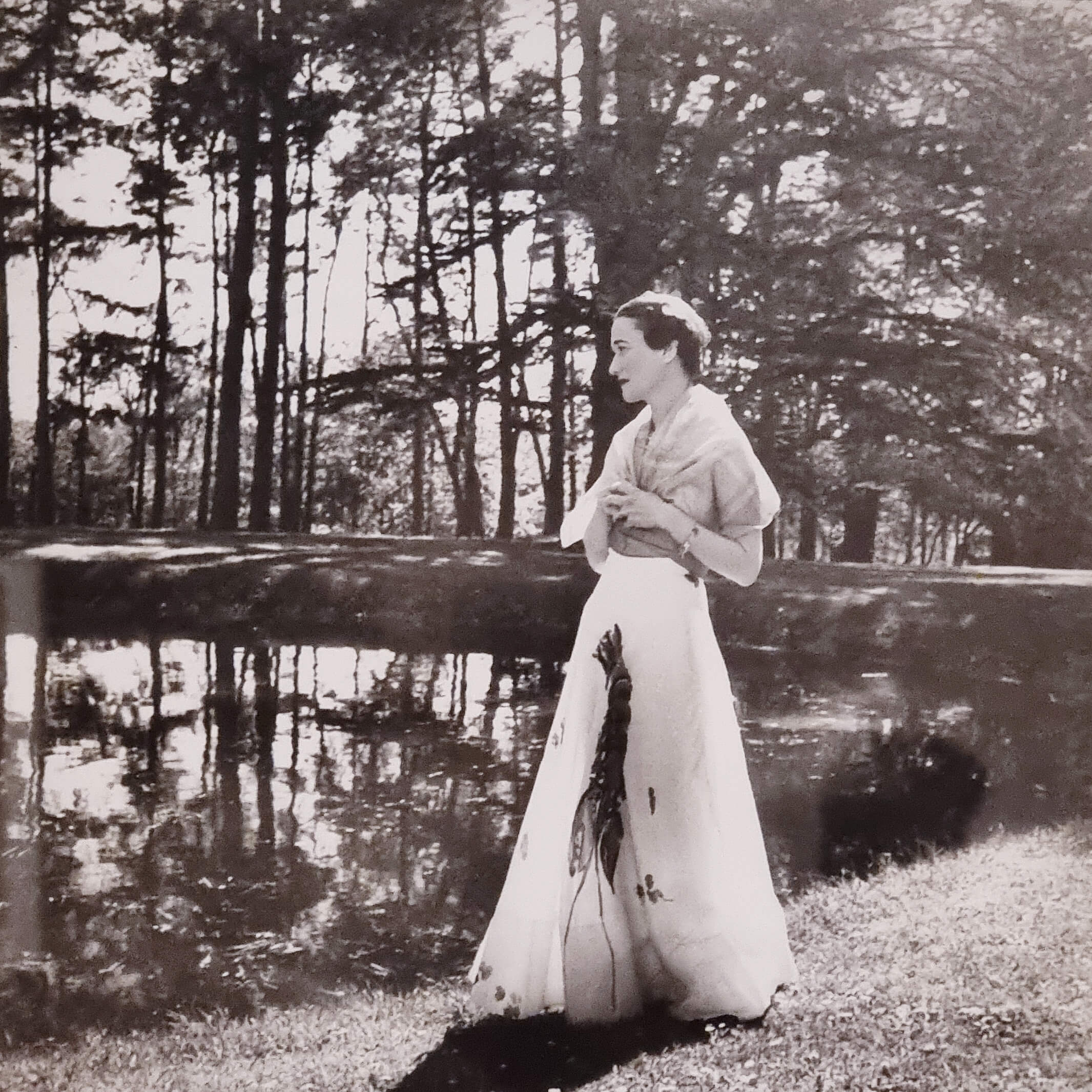
Causing ILLUSIONS
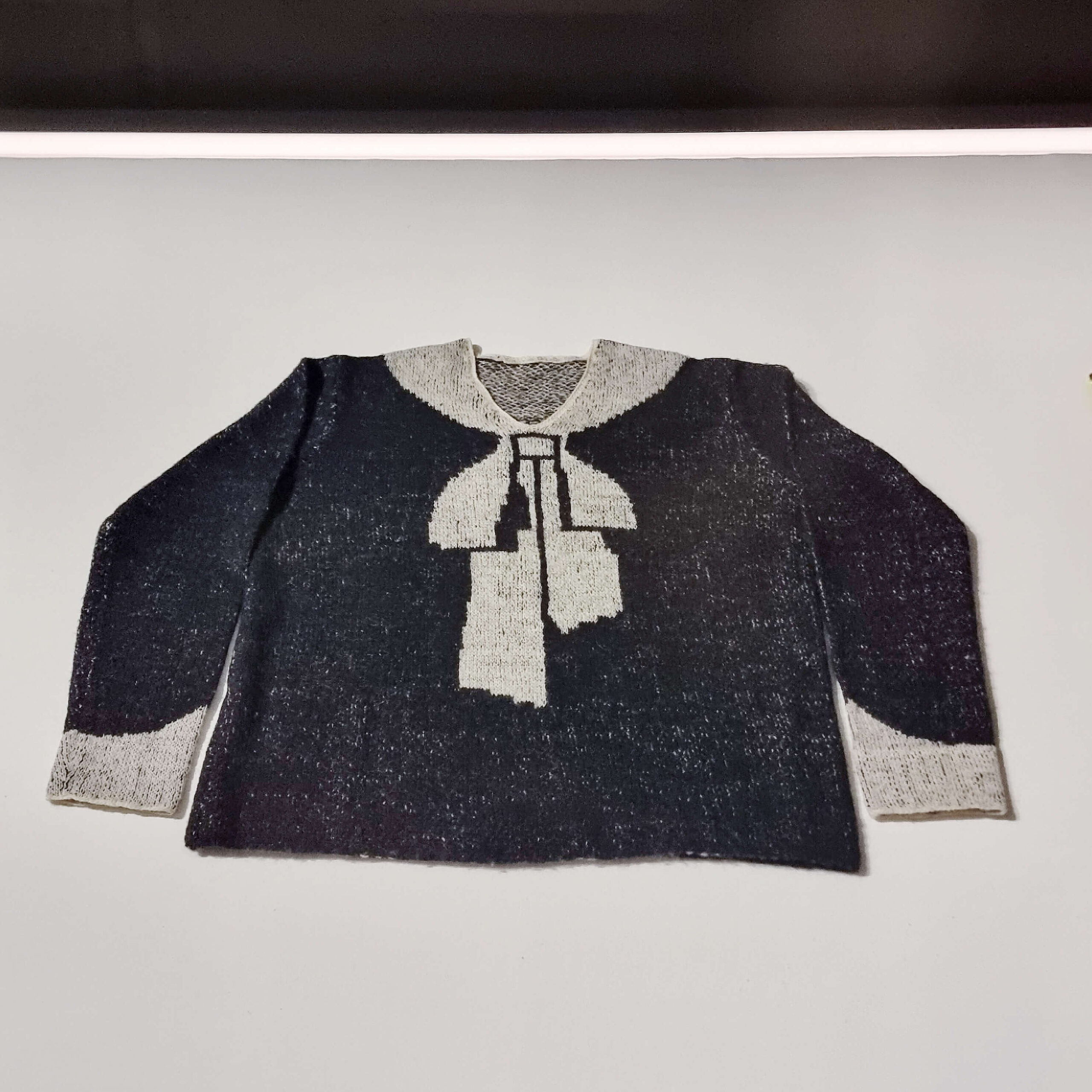
Generally, we have to point out, that causing a stir was in the heart of the creative strategy of Schiaparelli. She loved to create ECCENTRIC ILLUSIONS when designing clothes. La Schiap created trompe l’oeil bows when designing sweaters and trompe l’oeil prints on silk dresses, looking like torn parts of the fabric. She printed the articles, that appeared on her fashion house, on silk scarfs or designed long gloves, that actually worked as whole sleeves.
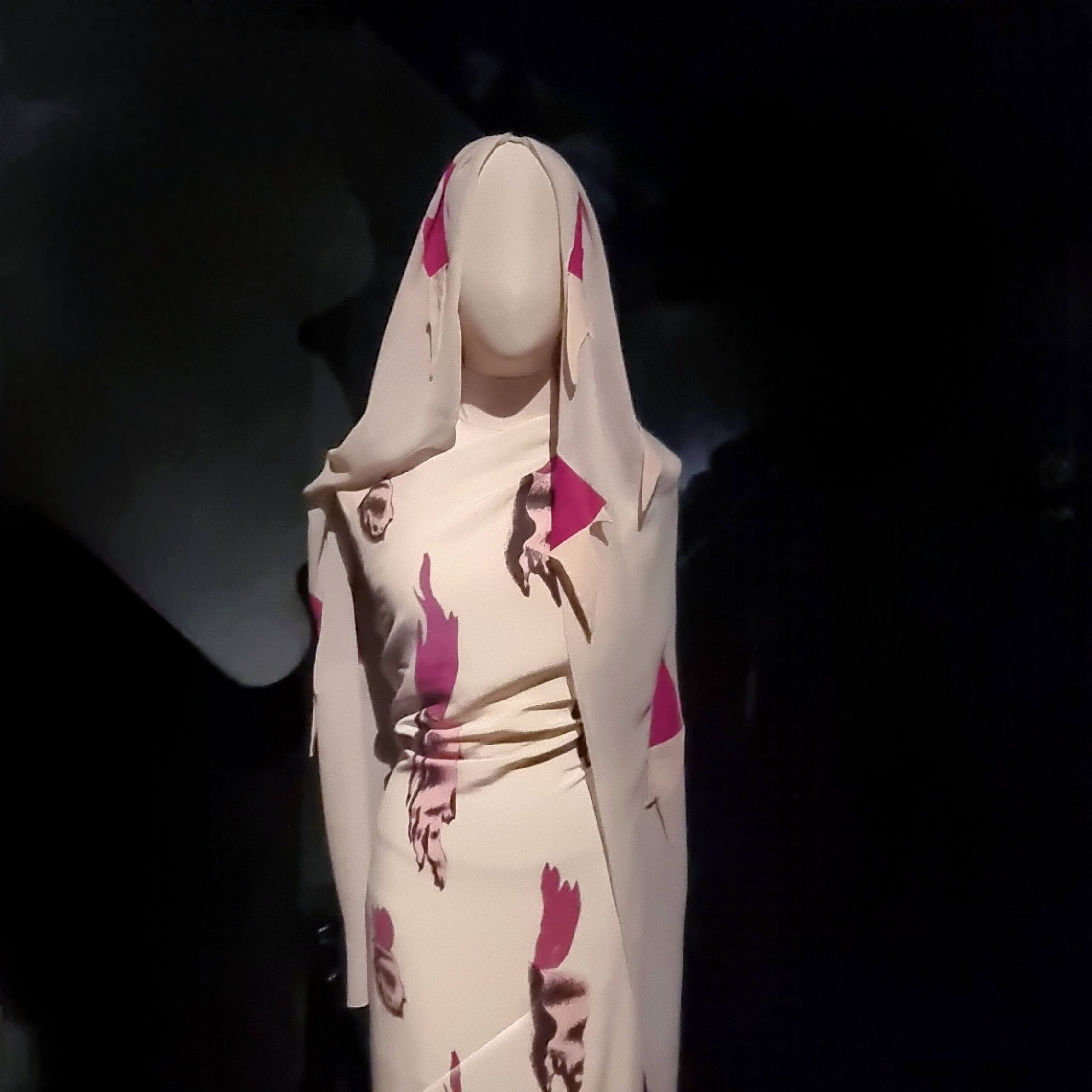
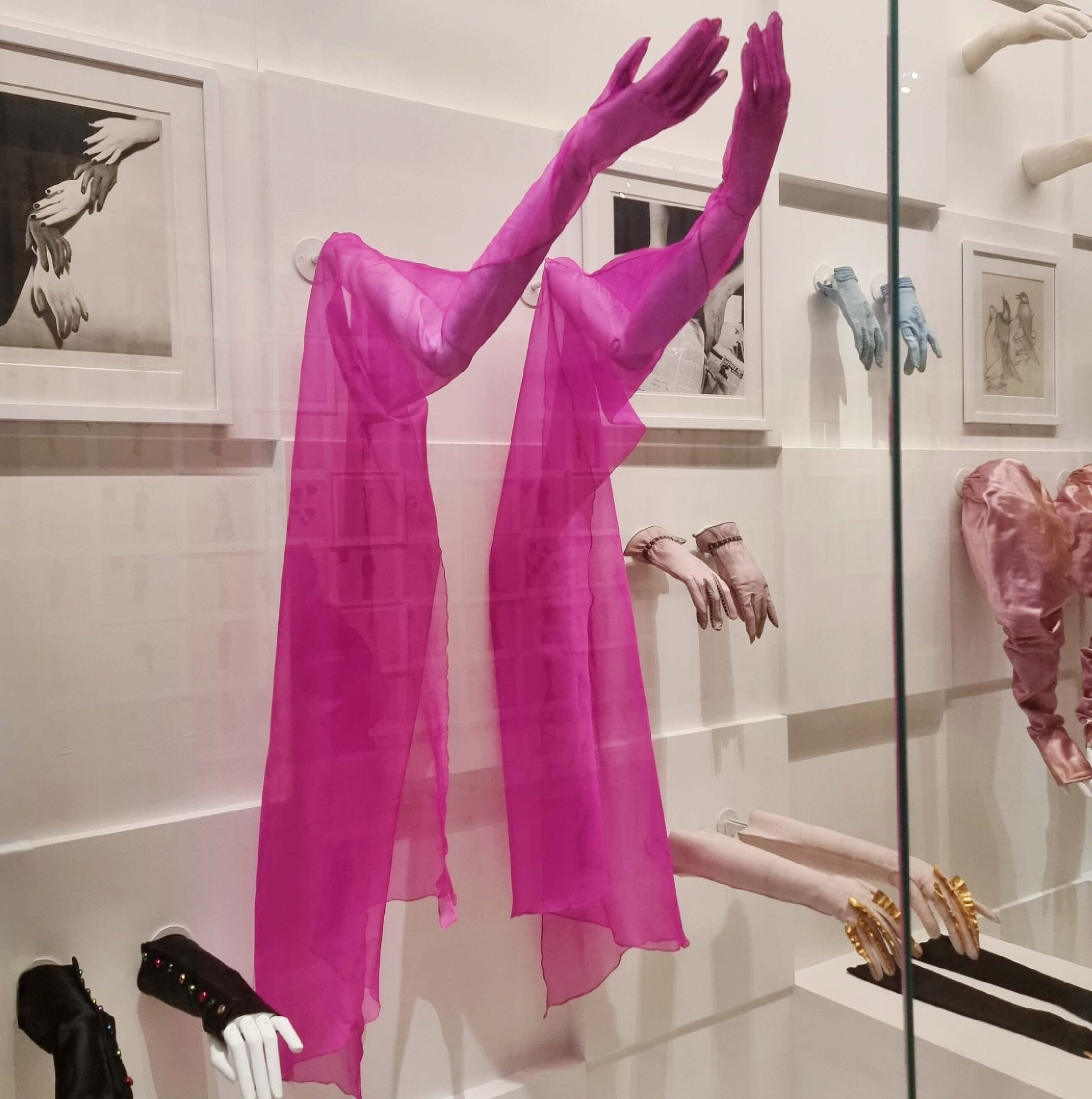
Let’s also take a look at the two very famous collaborations with Jean Cocteau: The famous evening jacket and the coat of 1937. Cocteau had created beautiful drawings of slightly SURREAL FACES – Schiaparelli embroidered these on the one sleeve of the grey jacket and on the back of the coat. The embroidery even intensified the surreal images by emphasizing some parts and therefore disguising others.
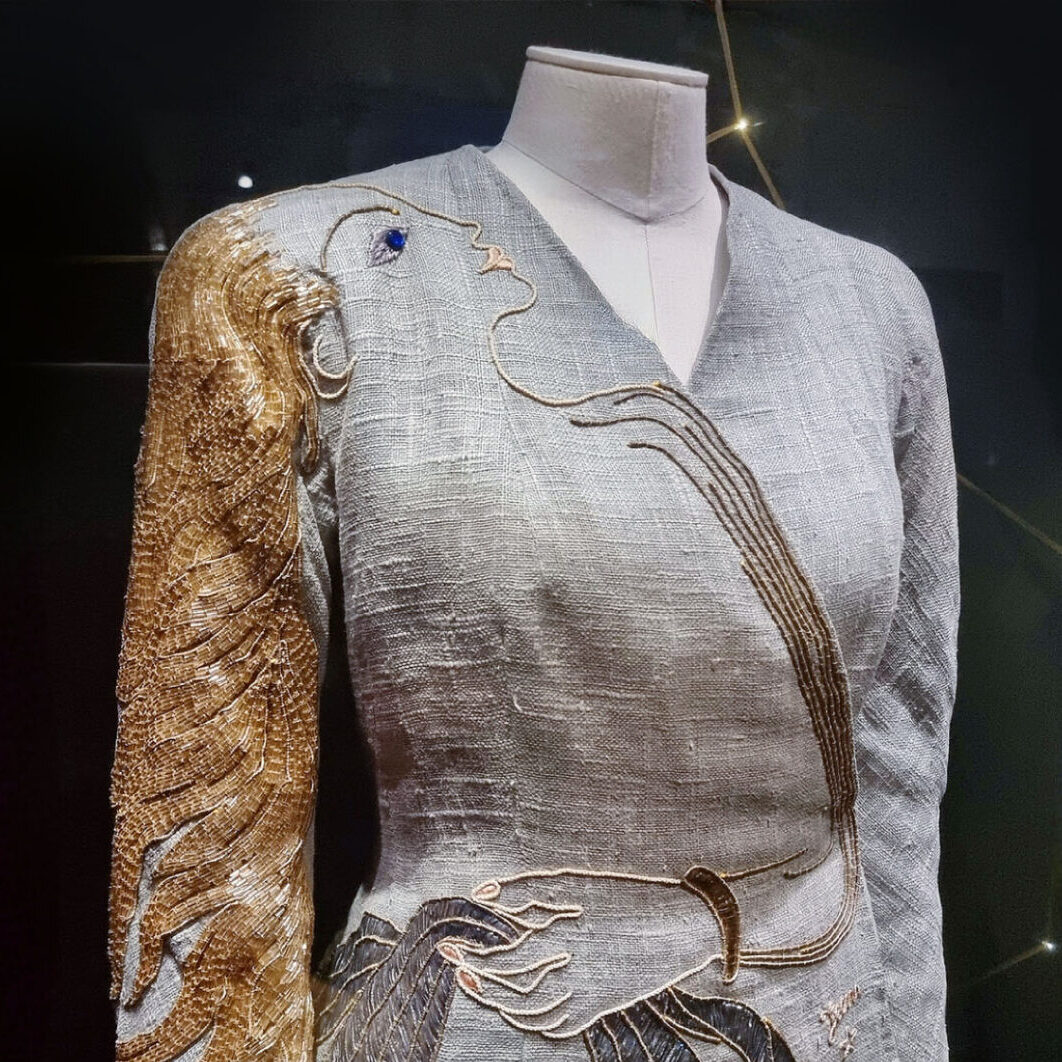
Jean Cocteau actually coined it pretty precisely when he said: ”Madame Schiaparelli has taken literally the expression: “the theatre of the mode”. Schiaparelli is above all the dressmaker of eccentricity, a young demon who tempts women – her establishment at Place Vendome is the devil’s laboratory.”3
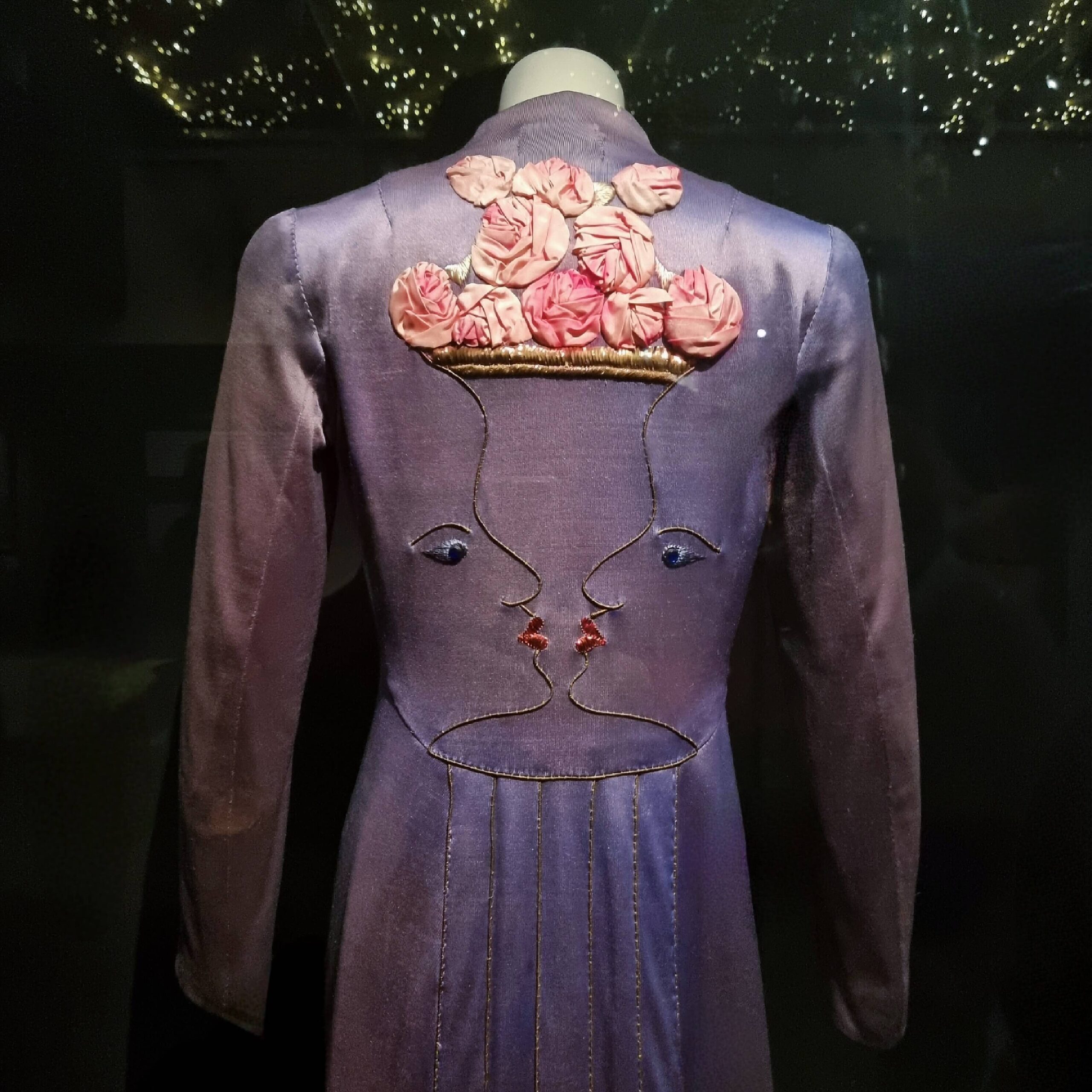
The ARTIST, who wants to be a COUTURIERE
Coco Chanel despised Elsa Schiaparelli, as can be found in many reports of their contemporaries. Chanel never mentioned Schiaparelli by her name but had other designations for her. She often derogatorily called her “L’Italienne” or “the artist, who wants to be a couturiere”. The latter says a lot not only about how envious Chanel must have been of Schiaparelli’s (intellectual & cultural) fame but also about what was the key of Schiaparelli’s work and success: ART, and then COUTURE.
